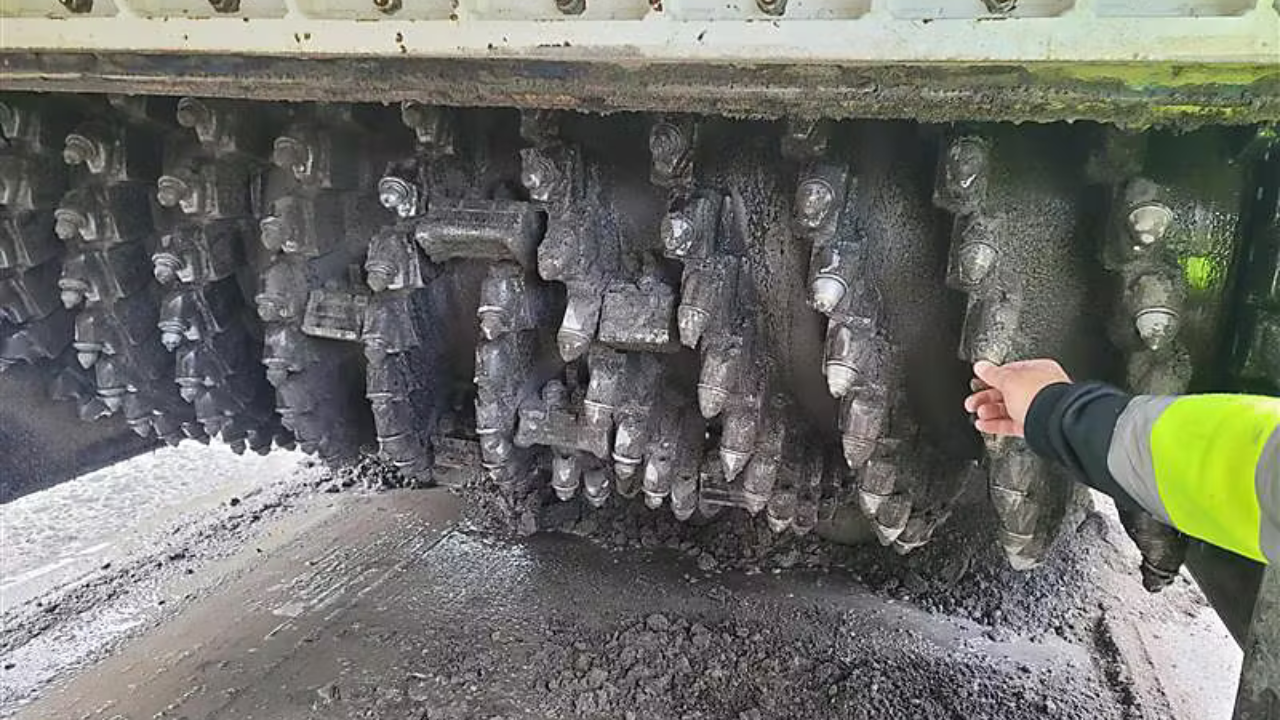Milling asphalt and concrete serves as the fundamental procedure for road construction and maintenance to achieve stable foundation layers before new pavement installation. The operational efficiency of asphalt milling teeth directly affects how long projects take, what they cost, and how well the surface turns out. Road construction companies achieve optimal milling process performance through proper strategy implementation, which leads to better equipment, durability, and enhanced productivity.
Choosing the Right Milling Equipment
Efficient operations require the selection of suitable milling machines and proper tools. Key factors to consider include:
- Larger machines equipped with higher horsepower enable deeper and wider milling operations, which boosts project efficiency when working on large-scale projects.
- The way cutting teeth are positioned on the drum determines both the speed and quality of milling operations. A drum set up correctly will produce uniform cuts while protecting the tools from excessive wear.
- Acquiring top-quality milling bits made of tungsten carbide tips delivers improved cutting capacity and extended instrument longevity, which minimizes replacement requirements.
Optimizing Cutting Patterns
The surface quality of mill outputs, along with operational efficiency, depends entirely on how milling machines approach their targets between asphalt or concrete materials. Some best practices include:
- Proper overlapping of milling passes creates smooth surfaces, which eliminates the need for extra passes.
- Manufacturers should adjust the milling depth to match project specifications, which stops too much material removal and reduces tool deterioration.
- The use of uniform speed during operation decreases tool vibrations to allow for equal material removal.
Regular Maintenance of Equipment
Equipment maintenance leads to superior operational performance, which decreases the number of machine stoppages. Key maintenance practices include:
- The replacement of worn milling teeth is essential because damaged or dull bits create inefficient cutting and require additional energy to operate.
- Drum alignment adjustments must be done correctly because they produce uniform material cutting as well as protect tools from premature deterioration.
- The machine's lifespan increases when all moving parts receive proper lubrication.
- The hydraulic and cooling systems must be monitored because they ensure both system performance and prevent overheating.
Enhancing Operator Skills
The efficiency of milling operations depends heavily on operators who possess the necessary skills. Providing proper training can:
- The trained operators possess the ability to modify machine settings according to different milling scenarios.
- Safety performance is enhanced through mastery of best practices because operators know how to prevent equipment breakdowns and safety hazards.
- Operators with quick, project-responsive skills enable better production rates along with shorter delays and enhanced effectiveness.
Using Advanced Technology
Productivity gains are possible through modern advancements in milling technology. Some key innovations include:
- The combination of automated control systems, which includes GPS along with laser-guided systems, enables exact measurements of depths and patterns during milling operations.
- Real-time tool wear tracking by wear monitoring sensors helps operators replace equipment before failures occur and minimizes equipment breakdowns.
- Operational costs decline, and environmental pollution decreases because of eco-friendly milling systems that incorporate fuel-efficient engines and dust-elimination technology.
Conclusion
The execution of asphalt and concrete milling operations requires appropriate equipment, strategic cutting plans, planned maintenance, qualified personnel, and modern technological solutions. Construction companies that focus on these areas will achieve cost reduction and faster project completion while delivering superior milled surface quality to build better road infrastructure.


